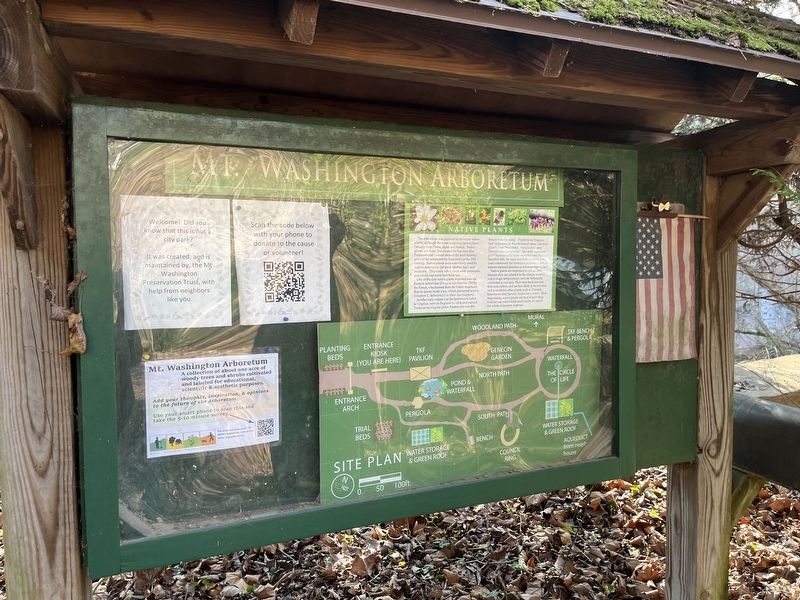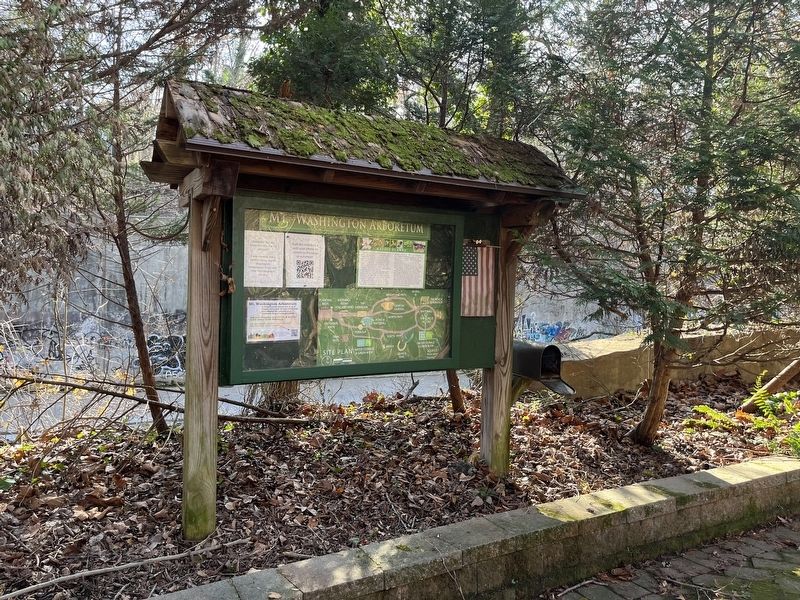Mount Washington in Baltimore, Maryland — The American Northeast (Mid-Atlantic)
Mt. Washington Arboretum
Native Plants
The arboretum was planned to showcase native plants, although there are some non-native plants (mainly from China, Japan and Korea). Native plants are those that existed in this area (the Piedmont and Coastal areas of the mid-Atlantic) prior to the settlement by Europeans in the 16th century. Native plants were extensively used by Native Americans for food, shelter, fuel, and medicine. They knew what plants were poisonous and which had some beneficial use.
One of the first native plants exported was the Eastern Arborvitae (Thuya occidentalis) in 1535 by the French, who learned from the Native Americans that its leaves made a tea, which prevented scurvy (vitamin C deficiency) in their fur-trappers.
Another early export was the Spiderwort, native to Virginia, sent to England in 1654 and maed Tradescantia virginia (John Tradescant was the Botanist to the King). Plants from Virginia had 'virginiania' in their botanical name. Likewise plants from Maryland: 'marylandica' and Pennsylvania 'pensylanica'. The most important plant economically to be exported was the Sassafras tree, the roots and bark of which were used extensively to be exported for medicinal purposes. Later on, tobacco replaced Sassafras as our main export plant.
Native plants are important in our gardens because they are adapted to the climate (rainfall and average temperature), and are historically connected to our area. They may need less care than non-natives are less likely to be invasive and overwhelm other plants such Oriental Bittersweet and Norway Maple have done). Most importantly, native plants are best at providing food for our native birds and insects, on which the whole ecosystem depends.
Erected by Mount Washington Preservation Trust.
Topics. This historical marker is listed in these topic lists: Colonial Era • Horticulture & Forestry • Industry & Commerce • Native Americans. A significant historical year for this entry is 1535.
Location. 39° 21.993′ N, 76° 39.369′ W. Marker is in Baltimore, Maryland. It is in Mount Washington. Marker can be reached from Tanbark Drive just west of Lochlea Road when traveling west. Touch for map. Marker is at or near this postal address: 5802 Kelly Ave, Baltimore MD 21209, United States of America. Touch for directions.
Other nearby markers. At least 8 other markers are within walking distance of this marker. Our Supporters (here, next to this marker); Welcome to the Mount Washington Arboretum (here, next to this marker); The Nursery (a few steps from this marker); Pond and Bog Garden (a few steps from this marker); Dawn Redwood (within shouting
Credits. This page was last revised on December 11, 2022. It was originally submitted on December 11, 2022, by Devry Becker Jones of Washington, District of Columbia. This page has been viewed 55 times since then and 9 times this year. Photos: 1, 2. submitted on December 11, 2022, by Devry Becker Jones of Washington, District of Columbia.

